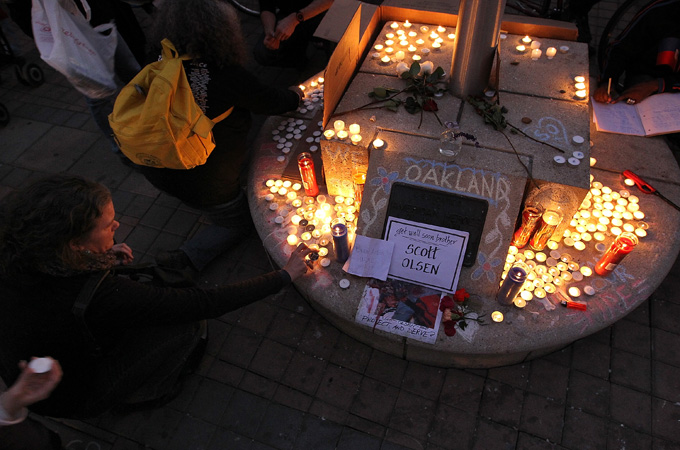 |
| In Oakland, police shot rubber bullets at peaceful prot |
What happens when a government builds a massive, unaccountable police apparatus to thwart infiltration by a foreign menace, only to see the society it's supposed to protect take to the streets for entirely different reasons?
It looks as though we may be about to find out. The Occupy protests have been mostly peaceful, with a few fairly dramatic exceptions. But the sight of a huge police presence in riot gear is always startling, and tactics that have been honed in Europe (such as "kettling") against anarchist actions have not been as common in the United States as elsewhere. More standard forms of crowd control, such as the aggressive use of pepper spray and "rubber" bullets have so far been the outer limits of the police use of force. But it is hardly the outer limits of the possibilities.The US has actually been militarising much of its police agencies for the better part of three decades, mostly in the name of the drug war. But 9/11 put that programme on steroids.
Recall that six short weeks after the September 11 terrorist attacks, the US congress passed the PATRIOT Act, a sweeping expansion of domestic and foreign intelligence-gathering capabilities. This legislation gave the government the ability to easily search all forms of communication, eased restrictions on foreign intelligence-gathering at home, gave itself greater power to monitor financial transactions and created entirely new categories of domestic terrorism to which the PATRIOT Act's expanded powers to police could be applied.
Read on...
This article is from Aljazeera. Tom

No comments:
Post a Comment